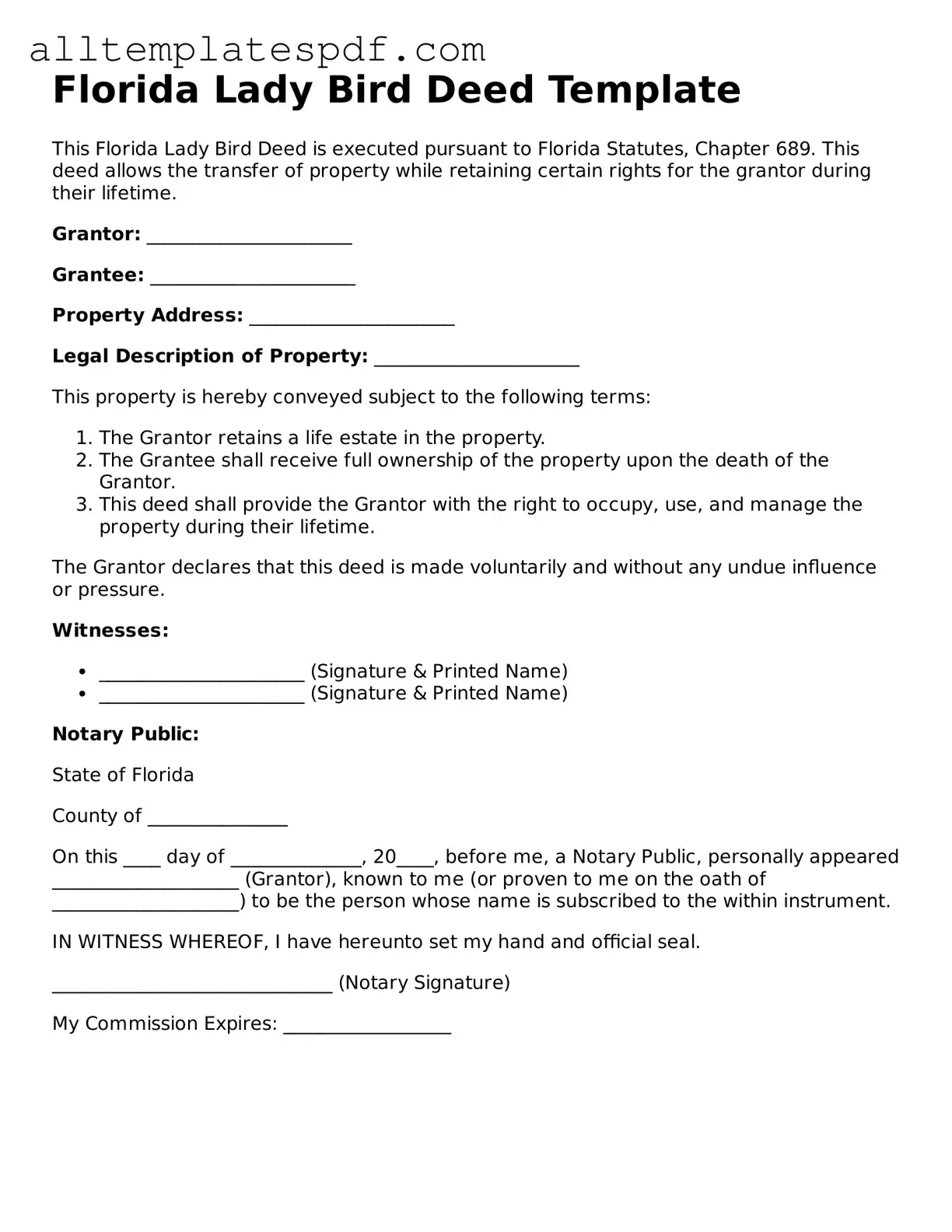Filling out a Florida Lady Bird Deed form can be a straightforward process, but many people make common mistakes that can lead to complications down the road. One significant error is not clearly identifying the property being transferred. It's essential to provide a complete legal description of the property. Omitting details or using vague language can create confusion and potentially invalidate the deed.
Another frequent mistake involves the names of the grantors and grantees. Individuals often forget to include middle names or use incorrect spellings. This oversight may seem minor, but it can lead to challenges in proving ownership or executing the deed later. Always double-check the names to ensure they match official identification documents.
Many people also neglect to include the proper notarization. A Lady Bird Deed must be signed in front of a notary public to be legally binding. Failing to have the document notarized can render it ineffective, leaving the property in limbo and potentially causing disputes among heirs.
Additionally, some individuals do not understand the implications of the Lady Bird Deed regarding taxes. They may mistakenly believe that transferring property through this deed avoids all tax liabilities. In reality, while it can help with Medicaid eligibility, it does not eliminate potential capital gains taxes when the property is sold.
Another common error is not considering the impact on existing liens or mortgages. If the property has a mortgage, transferring it via a Lady Bird Deed could trigger a due-on-sale clause, requiring the full mortgage balance to be paid immediately. It’s crucial to consult with a financial advisor or attorney to understand these implications.
People often overlook the importance of including contingency plans. For example, what happens if the grantee predeceases the grantor? Failing to address this can lead to unintended consequences, such as the property being passed to someone other than the intended recipient.
Lastly, many individuals do not keep copies of the completed deed or fail to record it with the county clerk’s office. Keeping a copy is vital for personal records, and recording the deed ensures that the transfer is publicly documented, protecting the interests of all parties involved. Without this step, the deed may not be recognized in future legal matters.
